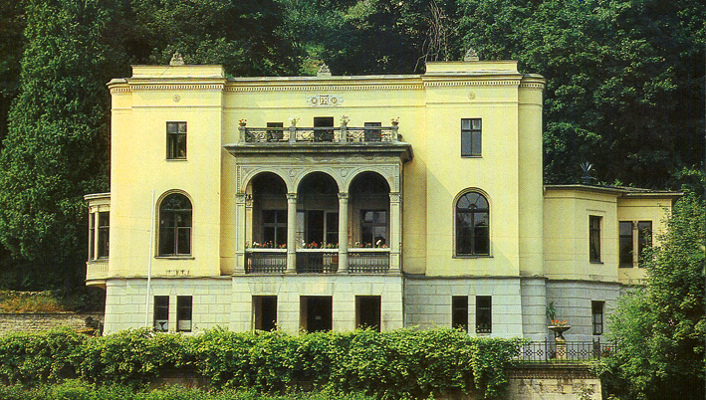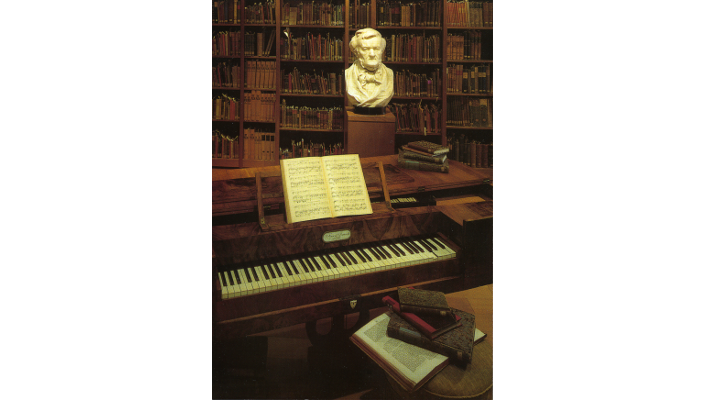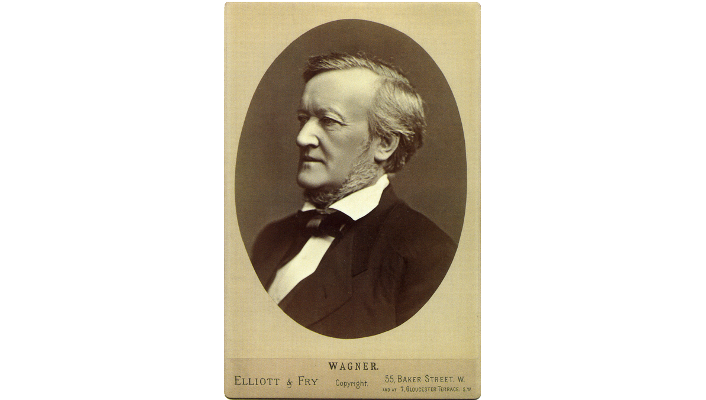




Reuter-Wagner-Museum
Reuterweg 2
99817 Eisenach
Telefon +49.3691.743294
Web: www.eisenach.de
E-Mail: reutervilla@web.de
nur nach telefonischer Vereinbarung
Die Geschichte der Richard-Wagner-Sammlung beginnt in Österreich. Nicolaus Oesterlein gehört zu der Gruppe der unbedingten Verehrer des Bayreuther Meisters. Er glaubte an die Zukunft der wagnerischen Kunst und trug schon zu Lebzeiten Richard Wagners mit großer Energie Bilder und Büsten, Briefe und Schriften, Theaterzettel sowie eine umfangreiche Bibliothek mit etwa 5000 Bänden zusammen. 1887 eröffnete er ein Privatmuseum in Wien, sah sich aber bald gezwungen, die Sammlung mit etwa 20.000 Objekten zum Verkauf anzubieten.
Der Eisenacher Bürger Professor Joseph Kürschner, bekannt durch die von ihm herausgegebenen Lexika und Literaturkataloge, setzte sich für den Verkauf der Sammlung durch die Stadt Eisenach ein. 1895 wurde die Oesterlein-Sammlung gekauft und in der Villa Fritz Reuters untergebracht und 1897 der Öffentlichkeit als Reuter-Wagner-Museum übergeben.
Seit 1997 ist die Oesterlein-Sammlung, die als zweitgrößte Wagner-Sammlung der Welt gilt, in einer neugestalteten Ausstellung zu sehen. Die Besucher erwarten u.a. eine 5000 Bände umfassende Bibliothek, eine Auswahl der 200 Handschriften von Richard Wagner, das Klavier auf dem er spielte sowie die Partitur des „Rienzi“.
Deutschland verfügt über musikalische Traditionen und Nachlässe von außerordentlichem Wert: Händel, Schütz und Bach, Beethoven, Mendelssohn, Schumann, Brahms und Wagner sind - um nur einige Namen zu nennen - weltweit bekannte und geschätzte Komponisten. Ihr Wirken hat eine einzigartige Musiklandschaft wesentlich mitgeformt.
Zahlreiche Orchester, Chöre und Ensembles, renommierte Musikfestivals und -reihen, Musikerhäuser mit Museen, öffentliche Archive und Bibliotheken, aber auch private Sammlungen bewahren ihr musikalisches Erbe.
Diesen unschätzbaren Fundus gilt es immer wieder neu zu beleben und für die Gegenwart zu erschließen. Den in der Arbeitsgemeinschaft Musikermuseen Deutschlands zuusammengeschlossenen Häusern kommt dabei eine wichtige Rolle zu. In ihnen begegnen wir dem Werk von Musikern und Komponisten, die die Kulturnation Deutschland außerordentlich bereichert haben. Über das individuelle Portrait, über die Vermittlung des einzelnen Œuvres hinaus tragen die Musikermuseen aber auch zur Pflege musikalischer Tradition insgesamt bei. Die vorliegende Broschüre unterstreicht diesen Aspekt der Zusammenschau, und sie lädt zu einer Reise in die Musikgeschichte Deutschlands ein. Ich wünsche diesem Reiseführer regen Gebrauch und eine große Resonanz.
Bernd Neumann, MdB
Staatsminister bei der Bundeskanzlerin
Der Beauftragte der Bundesregierung für Kultur und Medien
Zitat: Vorwort zur Broschüre der Arbeitsgemeinschaft "Musikermuseen in Deutschland", 2007.